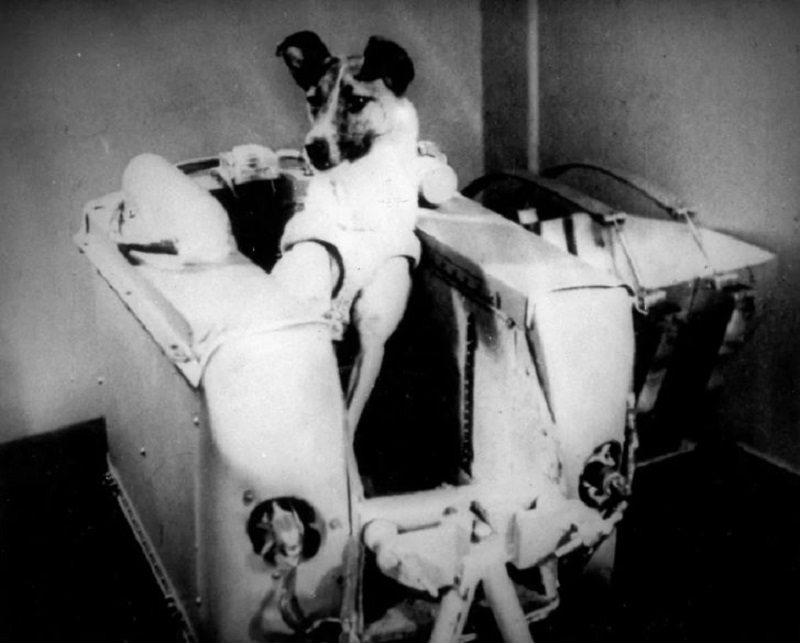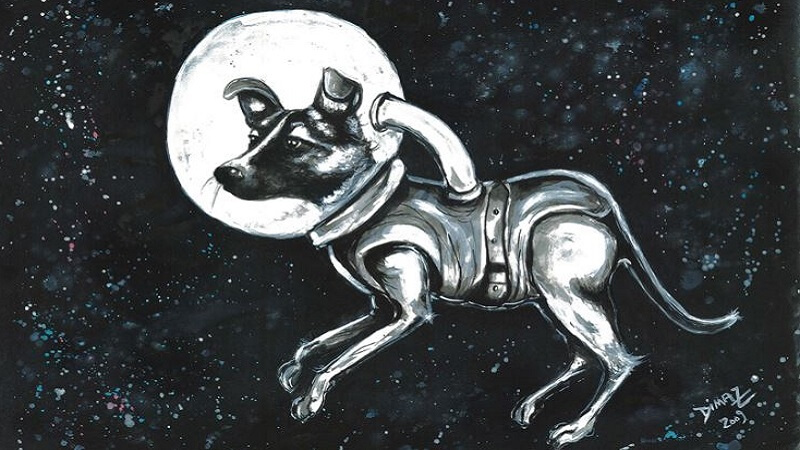Animals have always played a major part in our lives, but few have spent as much time with humanity as dogs did. So, it’s almost ironic that after the first successful launch of an artificial satellite, Sputnik-1, the second version, Sputnik-2, carried a dog onboard. Laika, a breedless stray with a name that means both Barky and an Eskimo dog in Russian, made history as the first dog in space, but her fate was far from glamorous.
Today, we know that many more animals and eventually humans travelled the same road, but at the time, space tech was far from perfect, the accident rate enormous, and the odds of survival in space were largely unknown. Laika, an unwilling contributor to science, helped shed light on some of these questions but had to pay for it with her life. Below, we tell the harrowing story of the first animal in space and the aftermath of the first pawed flight to orbit.
Why did they send Laika to space: mission objectives
In the 1950s, the tensions between the USSR and the US were steadily heating, and the 20th-century race was only gaining momentum. The USSR led the race with its successful launch of the first satellite, Sputnik, in 1957. Sputnik-2, with a dog onboard, was the second stage of the experiment, and this mission had set many important objectives, such as:
- Determining whether living organisms could survive the space launch and the conditions of low Earth orbit;
- Observing and documenting the effects of weightlessness (microgravity) on a living organism;
- Testing life-support systems designed to provide air, food, and water to a living being;
- Demonstrating the USSR’s space-faring capabilities and securing its space leadership;
- Collecting data for future human spaceflights.

But why a dog, specifically? Jumping ahead, let’s just say that over thirty dogs followed Laika to space, with a roughly 50/50 mortality rate, but most mission goals were accomplished — even though many still disagree with the price. The dogs were chosen for their trainability and predictable psychology. Besides, only breedless stray dogs took part in the program because of their tolerance for hard physical conditions and isolation.
Notably, as a space news resource points out, even though the canine mortality rate for the USSR was high, the human death toll (the official one, at least) was considerably lower than that of the US. Could this be attributed to the canine program? Possibly, but considering the Soviets’ notorious history of concealing inconvenient information, it’s hard to jump to any decisive conclusions.
Muttnik or Laika’s Suicide Mission
On November 3, 1957, Laika, chosen among several other stray dogs for high resilience and docile temperament, launched into orbit. The first dog in space was supposed to stay there for seven days and was supplied with enough food and water in gelatin form.
But how long did Laika survive in space? Here, accounts differ. According to the USSR’s official announcements at the time, the dog lasted the whole intended week, but years later, Soviet sources indicated a shorter period. Assumptions that the dog lasted only a few hours instead of days were also voiced, considering that the capsule had poor thermal coating and the animal could have overheated six hours after launch.
Did Laika suffer when she died? Most likely, and even though the animal rights movements were not as strong in the 1950s as they are today, the launch still caused a major public outrage, especially in the UK, where even the Royal Society protested against the launch. The US took a more mocking stance, with newspaper headlines massively adopting the name Muttnik for Sputnik-2, among other mocking puns.
But jokes aside, it was clear from the very start that Laika would not survive the trip because no return mechanism was invented, and the whole launch was rushed to make the date coincide with yet another anniversary of the Soviet revolution.
So, is Laika the dog still in space? As in, her remains? No; in April of the next year, the satellite with the animal’s remains plunged back into our planet’s atmosphere, and Laika dog dead body burned on the descent along with the capsule.
First dog in space death & mission aftermath
Despite her tragic story, Laika proved that ‘terrestrials’ can survive in space if provided with the right equipment. This paved the way for many more space missions, manned and pawed. Of course, even today, many argue that the launch could have been different — instead of rushing the mission to make it coincide with another political holiday of the time, the USSR could have designed some return mechanism to boost the animal’s odds of surviving.
But history is history; in the USSR alone, many more dogs followed Laika, along with a series of monkeys from the US (slightly higher survival rate), and even a few cats from France! But that is a story for another day, so stay tuned for more space exploration posts on our website.
Author: Emma Thorpe
